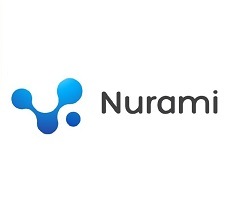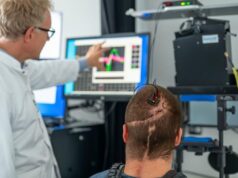 Nurami Medical, a medical device startup company, has received 510(k) clearance from the US Food and Drug Administration (FDA) for its electrospun nanofibre-based product, ArtiFascia Dura Substitute. US sales of this resorbable dural repair graft will begin in the upcoming period, as per a press release.
Nurami Medical, a medical device startup company, has received 510(k) clearance from the US Food and Drug Administration (FDA) for its electrospun nanofibre-based product, ArtiFascia Dura Substitute. US sales of this resorbable dural repair graft will begin in the upcoming period, as per a press release.
Neurosurgeries require replacing the dura mater, which protects the brain and cerebrospinal fluid (CSF), the release details.
ArtiFascia combines two layers of electrospun nanofibres that form biomimetic scaffolds and a non-porous barrier layer. Nurami says this “unique structure” is dual functioning: the scaffolds are engineered to promote dural tissue regeneration and rapid healing, while the barrier layer is designed to address CSF leakage from suture holes and bacterial penetration.
Similar in thickness to native dura, ArtiFascia can be effortlessly sutured, accelerating surgeon workflow and lowering healthcare costs, the company also claims, adding that its implant is “strong, pliable, fully absorbable, synthetic, and easy to handle and cut”.
This FDA clearance builds on Nurami’s randomised clinical trial—an 85-patient study that showed “excellent performance” against primary endpoints of CSF leakage prevention as well as other safety and surgeon-preference measures.
“This is an important milestone in Nurami’s efforts to modernise soft tissue repair,” said Hannoch Marksheid, the company’s co-CEO. “ArtiFascia is a novel alternative for dura repair, addressing dangerous CSF leaks and infections at the surgical site, while promoting dura regeneration.”
“There is a need for a thin, pliable dural substitute that can be sutured in place, does not leak through the suture holes, and that will integrate into the surrounding dura,” said Andrew Kaye (Hadassah Hebrew University Hospital Jerusalem, Jerusalem, Israel/The Royal Melbourne Hospital, Melbourne, Australia). “Nurami’s ArtiFascia Dura Substitute has exactly these features and showed impressive results in a clinical study. The presence of electrospun nanofibres in the implant has the potential to be a gamechanger in optimising dural regeneration after neurosurgery.”
“The necessity to cover the brain with a safe and reliable dural substitute remains a need even after 140 years of neurosurgery,” added Michael Schulder (Donald and Barbara Zucker School of Medicine at Hofstra/Northwell, Uniondale, USA). “ArtiFascia really looks like the solution we have been waiting for, going back to the days of Harvey Cushing and even earlier. Even for people having posterior fossa surgery, ArtiFascia has shown that it reliably seals dural gaps and prevents the formation of pseudomeningoceles.”










